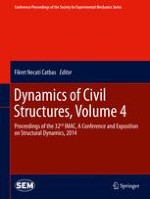2014 | Book
Dynamics of Civil Structures, Volume 4
Proceedings of the 32nd IMAC, A Conference and Exposition on Structural Dynamics, 2014
Editor: Fikret Necati Catbas
Publisher: Springer International Publishing
Book Series : Conference Proceedings of the Society for Experimental Mechanics Series
